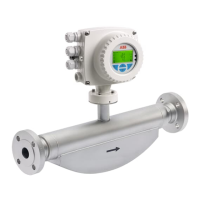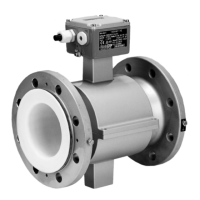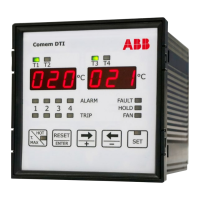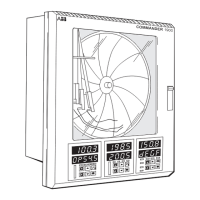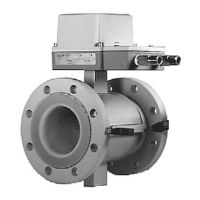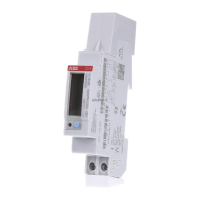36 CI/FCB300/FCH300-EN Rev. F | CoriolisMaster FCB330, FCB350, FCH330, FCH350
7.1.3 Version II: Passive / passive current outputs
Model FCx3xx-A1, FCT3xx-A1 or FCx3xx-A2, FCT3xx-A2 or FCx3xx-S2, FCT3xx-S2
Type of protection
General operating
Type of protection
Type of protection "ia"
U
i
(V)
I
i
(mA)
U
b
(V)
I
b
(mA)
U (V)
I (mA)
U
i
(V)
I
i
(mA)
P
i
(mW)
C
i
(nF)
C
i
pa
(nF)
L
i
(mH)
Current output 1, passive
Terminals 31 / 32
30 30 30 30 60 35 60 300 2000 0.47 0.47 0.17
Current output 2, passive
30 30 30 30 60 35 60 300 2000 0.47 0.47 0.17
Pulse output, passive
30 65 30 65 60 35 60 300 2000 0.47 0.47 0.17
Switching output, passive
Terminals 41 / 42
30 65 30 65 60 35 60 300 2000 0.47 0.47 0.17
Switching input, passive
30 10 30 10 60 35 60 300 2000 0.47 0.47 0.17
All inputs and outputs are electrically isolated from one other and from the auxiliary power.
Chan ge from on e to two c olumns
7.1.4 Special connection conditions
The output circuits are designed so that they can be
connected to both intrinsically-safe and non-intrinsically-safe
circuits.
It is not permitted to combine intrinsically safe and non-
intrinsically safe circuits. In case of a change of type of
protection observe chapter 6.6.7.
On intrinsically-safe circuits, equipotential bonding must be in
place along the entire length of the cable used for the current
outputs.
The rated voltage of the non-intrinsically safe circuits is
U
M
= 60 V.
The switching output and the pulse output (terminals 41 / 42
and 51 / 52) can be wired internally as a NAMUR contact for
the purpose of connecting a NAMUR amplifier.
The cable glands are supplied in black by default. If the signal
outputs are wired to intrinsically-safe circuits, we recommend
that you use the light blue caps supplied for the appropriate
cable entries.
IMPORTANT (NOTE)
If the protective conductor (PE) is connected in the
flowmeter's terminal box, you must ensure that no dangerous
potential difference can arise between the protective
conductor (PE) and the equipotential bonding (PA) in the
hazardous area.
Chan ge from tw o to one c olum n

